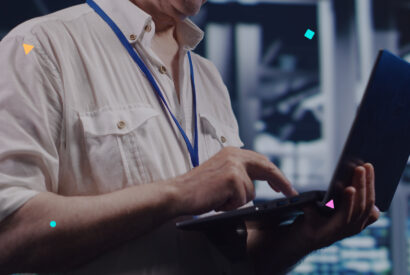What are the phases of a web project

A web project is composed of different phases or successive stages from the initial briefing for the taking of requirements to the maintenance of the site once it is published.
It has always been said that the first impression of the website is defined by the design. Therefore, it is essential that the design is attractive and surprises the user.
However, it must be borne in mind that we cannot start a web design without an initial briefing, just as the user or potential client will not be able to see the web if there is no previous development.
You may wonder why it is important to know the phases of a web project. And the answer is clear: we will avoid getting out of control when organizing the process and customer complaints and questions if we have previously explained to them how it will be.
Having said that, let’s delve into the importance of being clear about the different phases of a web design and development project.
Tabla de contenidos
The importance of knowing the phases in a web project
Let’s imagine that you are an athlete and in 2 months you have an important competition. They have sent you a dossier with the training but they do not indicate the phases. You know where you need to start, but you don’t know for sure.
The same goes for the design of a website. You can guess how to start with the project, but if you do not have a marked planning it is very possible that you will deviate from the path.
And besides, as we have mentioned before, if you do not explain the phases to your client, he will not trust much in your transparency and, in addition, he will be constantly asking you about the future of the project as well as the completion times.
You will have more clarity about the project and you will also avoid saturation on the part of the client. 2×1.
We are sure that you are here to know the different phases, so let’s get to the point.
Phases of a web project
It is true that every professional and agency is a world. Everyone with their own processes and ways of working. But we consider that these are the basic guidelines about a web creation process.
Online briefing
The first step in designing a website is the collection of information.
Let’s forget that you have already signed the contract with your client. Now it’s time to meet with him and get to know his business model and needs. It’s usually fine for you to do this even before closing the proposal.
It is an essential step because it implies understanding the company, its objectives, its potential client or buyer persona and the requirements they may have for the project.
In another article we explain much more about how to make an online briefing for a website. In this phase the professional in charge of the web design will make sure to ask the necessary questions to the client before starting with the project. To have all the relevant information.
What are the most common questions?
- What is the purpose of the website?
- What information do you consider necessary to appear on the website?
- Is your goal to have a cover sheet, or also to have a place to sell and achieve conversions?
- What audiovisual material do you have? Do you have a style guide or brand book?
- What values do you want the page to relate to?
- What do you do better than your competition?
- What do your customers say/like about you/your products/services?
The more information, the greater the saving of time and resources on the project.
Brainstorming or sketch design
Once the designer has all the information on the table, it’s time to start designing a possible sketch of what the client’s website is going to be.
You can choose to start by making a basic design or wireframe to validate the content structure with the client.
Once you have this, it will be time to move on to visual designs, adapted to the client’s brand image and as complete as possible. To later send them to the customer and get feedback.
With the consequent modifications and adaptations that this will entail.
It is a phase of review, adjustment and approval, until client and designer are satisfied with the design.
Likewise, this is also when we make decisions about elements to incorporate, such as contact forms, custom post types or layouts that are repeated in different places on the web.
TIP: It is very important to take into account from the beginning, both the brand elements, as well as the logo and the colors of the company. All this will allow you to get a much clearer idea of what the client wants.
Web development
Taking as a reference the web design made previously, as well as all the selected graphic elements, it’s time to build the website.
You can use a predefined theme, a visual builder or make the development completely custom.
There each professional has his own preference and, sometimes, it will also depend on the budget of the project.
This means developing both the website for desktop and for mobile. And just like the design phase, this also requires a review by the client to make sure that the behavior of the website is what he is looking for.
It is also vital that the client is punctual when it comes to providing you with the contents, your specialty is the design and / or development of web pages, but you are not an expert in all the sectors with which you can work.
Once you have built the website it is important that you have the content. Even the ideal would be that you have a part of them before starting because if it depends on the client passing them on to you later, it can be a problem. This is where most projects get delayed.
Testing and delivery of the project
Once the website is already built according to the specifications, contents and needs of the client, it’s time to check that everything is in order.
What are we talking about here?
- Check that it works on both desktop and mobile.
- To see if it is aligned with what we had designed.
- Install and configure all the necessary plugins.
- Create the legal pages properly.
- Index the website.
- Check that all the meta descriptions are there, featured images, external links are working, etc….
Once we check that everything is working correctly, we send it to the customer so that they can give us their latest feedback.
And when we receive that final approval, we migrate the files to the production server. This means the official launch of the website and its visibility to the public.
Maintenance of the website
Once the website is published, we should not consider the project finished. In fact, it is only the beginning and it is an opportunity as a professional to increase your service offer.
A good website maintenance is something basic that every WordPress website should have.
As you know, WordPress itself, its themes and plugins, require updates to ensure a good performance. And, above all, to avoid security problems.
Add to that the need to check the web from time to time, solve problems that may arise and even have backups in case they need to be recovered at any time.
That’s why any professional or web design agency should offer a web maintenance service to their clients. So that once their page is published, they will not be left alone facing the challenge of continuing to grow in the digital world.
Yes, it is a tedious job and many times we need different tools to help us with it. But, with applications like Modular you can manage the maintenance of all your websites from the same place. And centralize the updating of plugins, making backups, monitoring of uptime monitor and even performance analysis.
In case you get the itch, we leave this link for you to register and try it.
Conclusion
As we can see, starting a web design and development project is to start a long-term relationship with your client. A relationship in which your part is based on helping him position himself and grow in the online world.
To avoid misunderstandings and ensure that the project is a success, it is essential to work in an orderly and professional manner in each of the phases we have mentioned.
In addition, it would be great if it is something that you can define from minute 1 in the web proposal that you make to your potential clients. So that they are clear about what it will be like to work with you.


